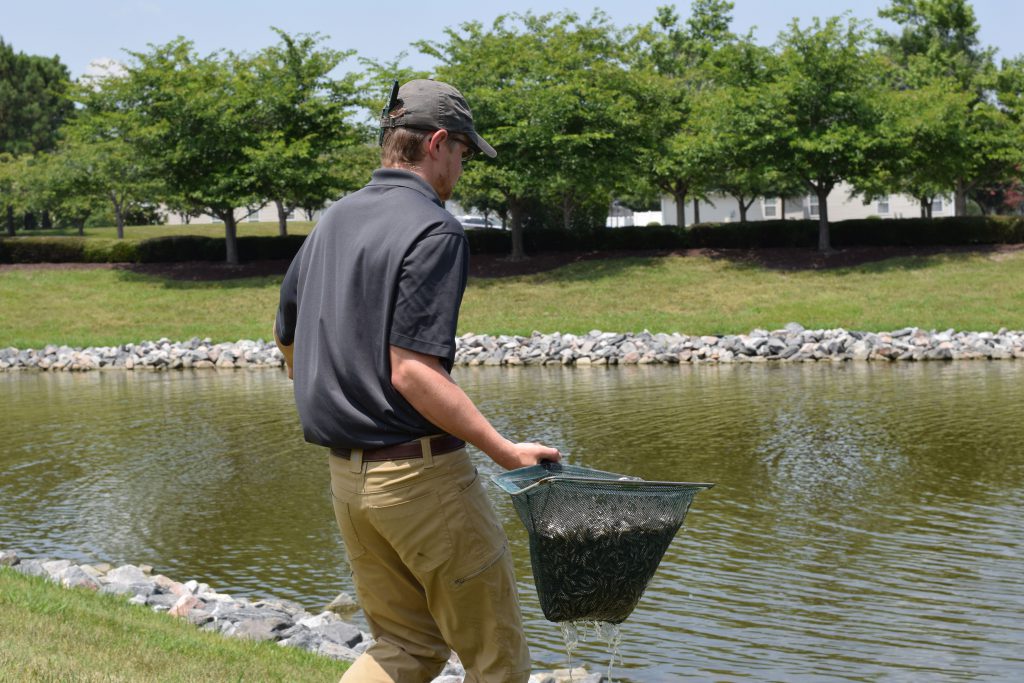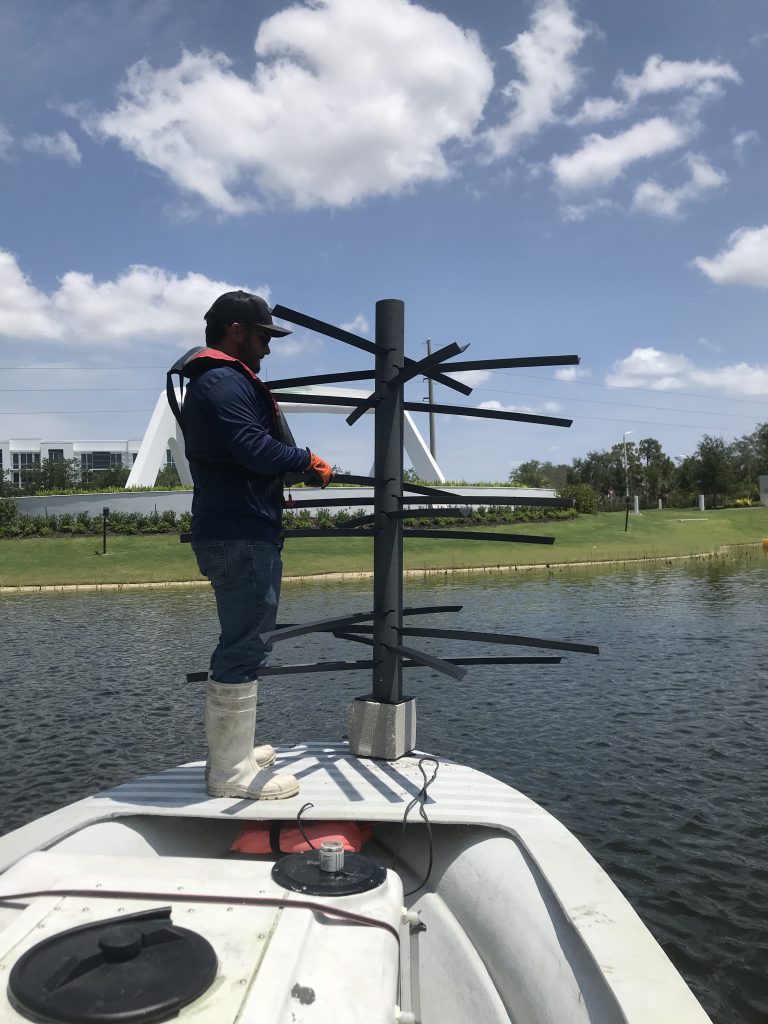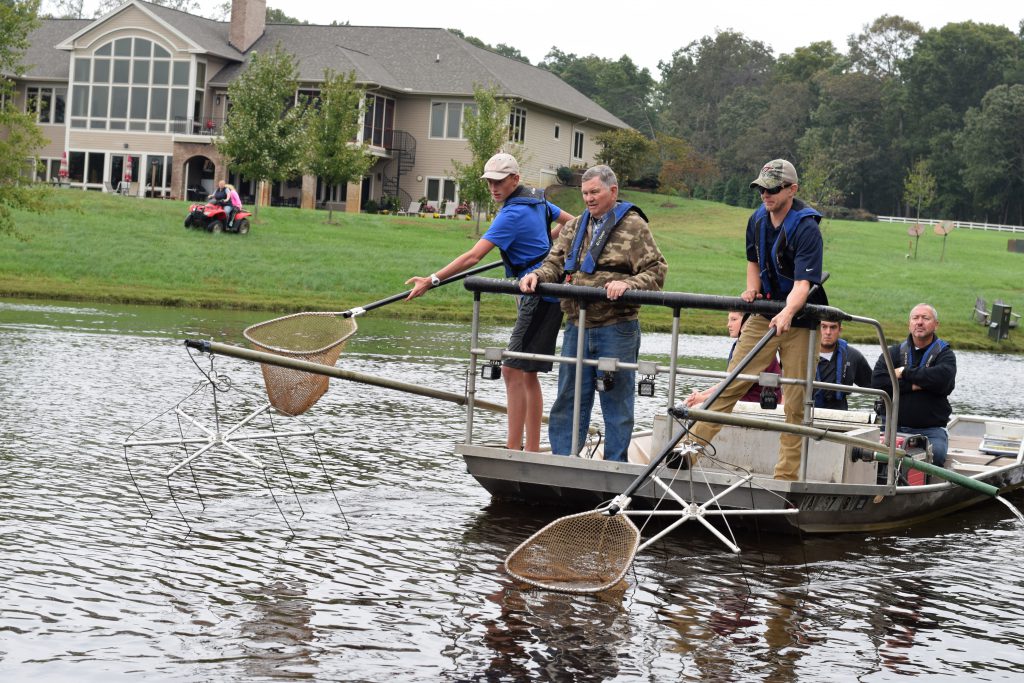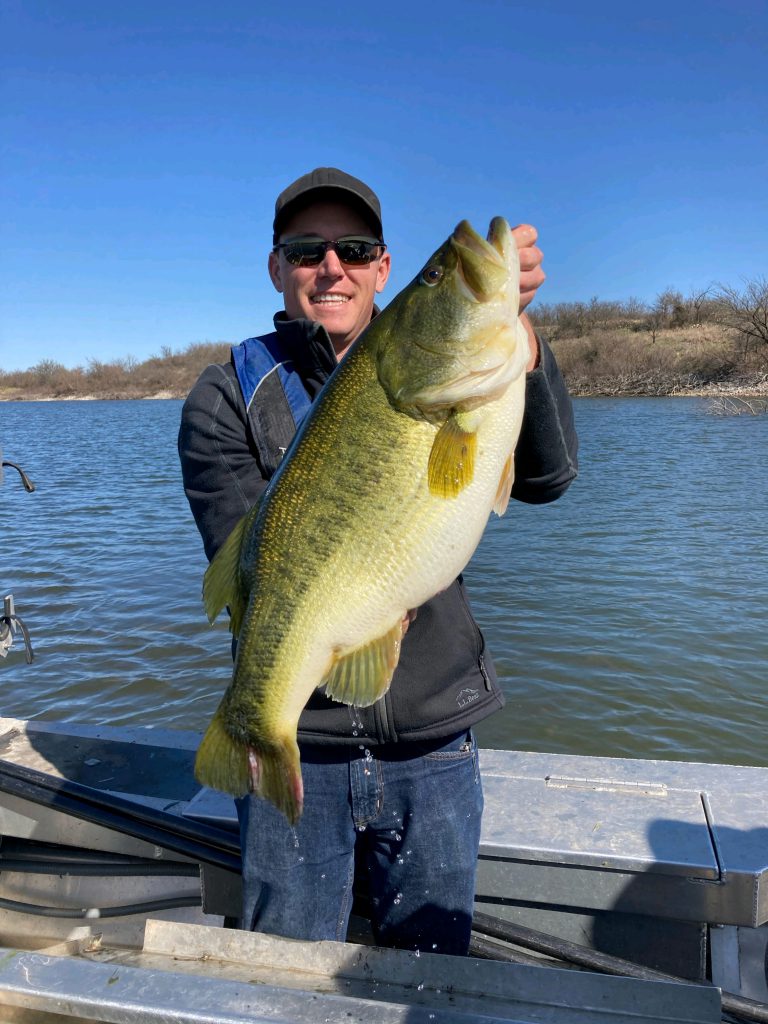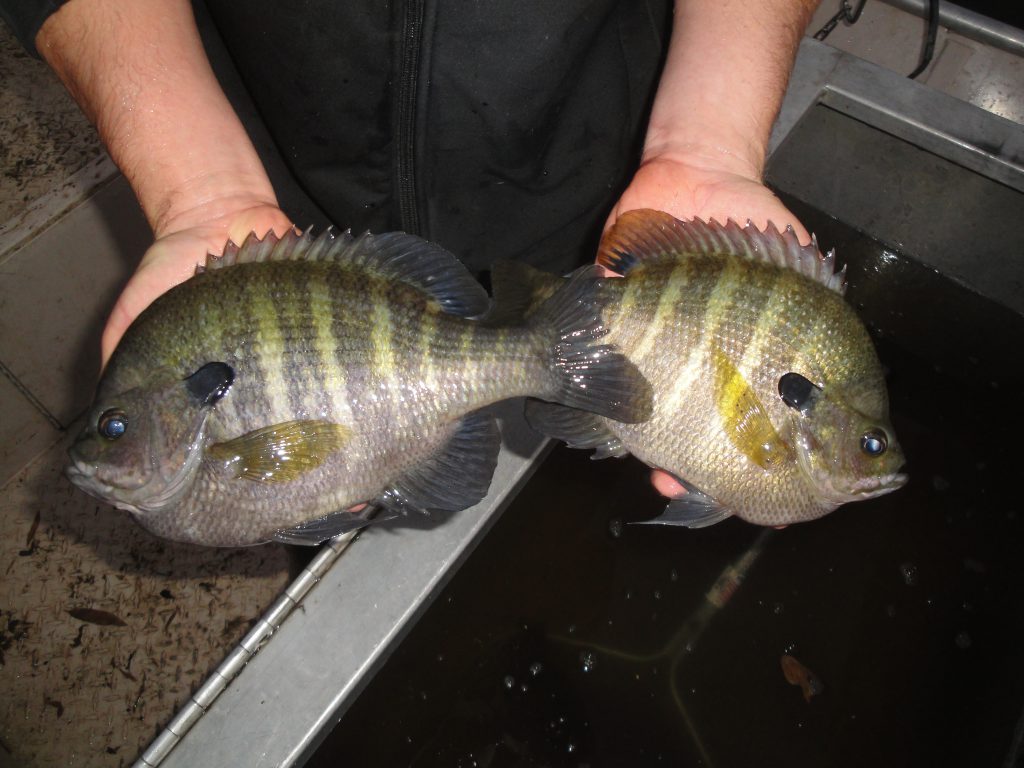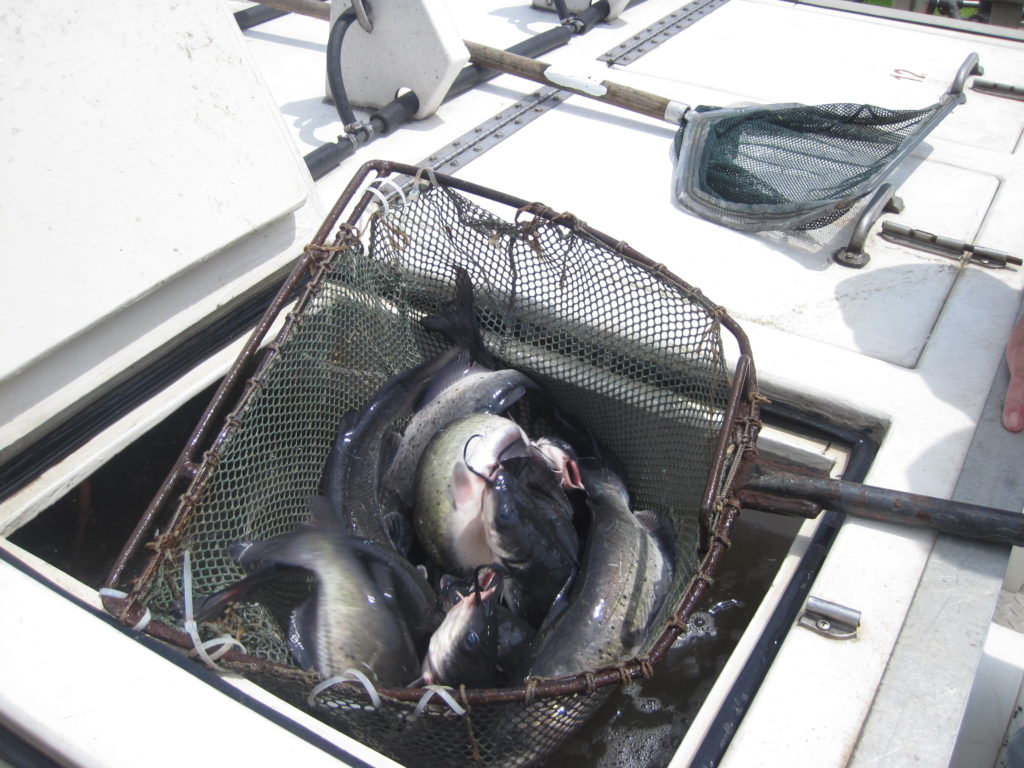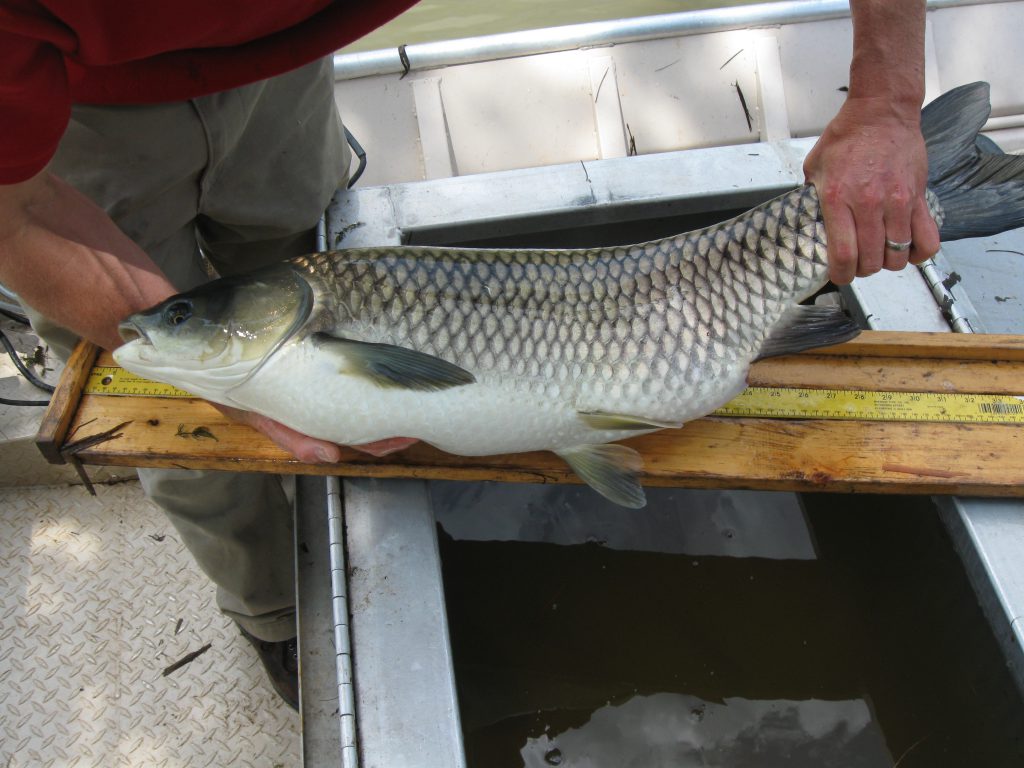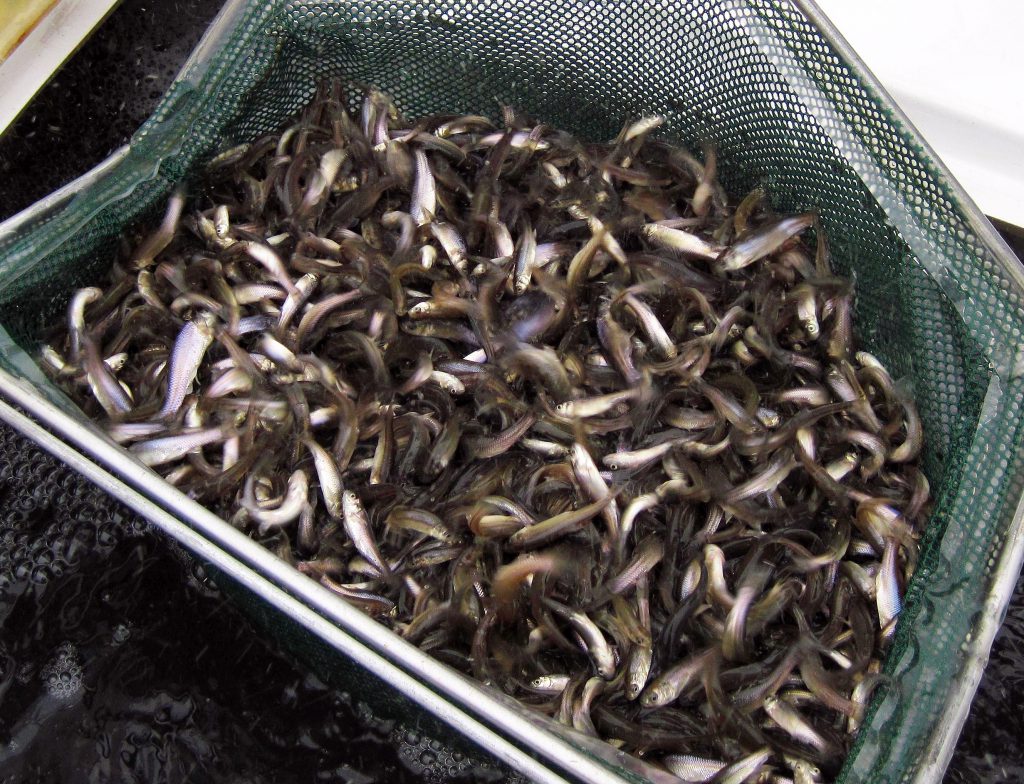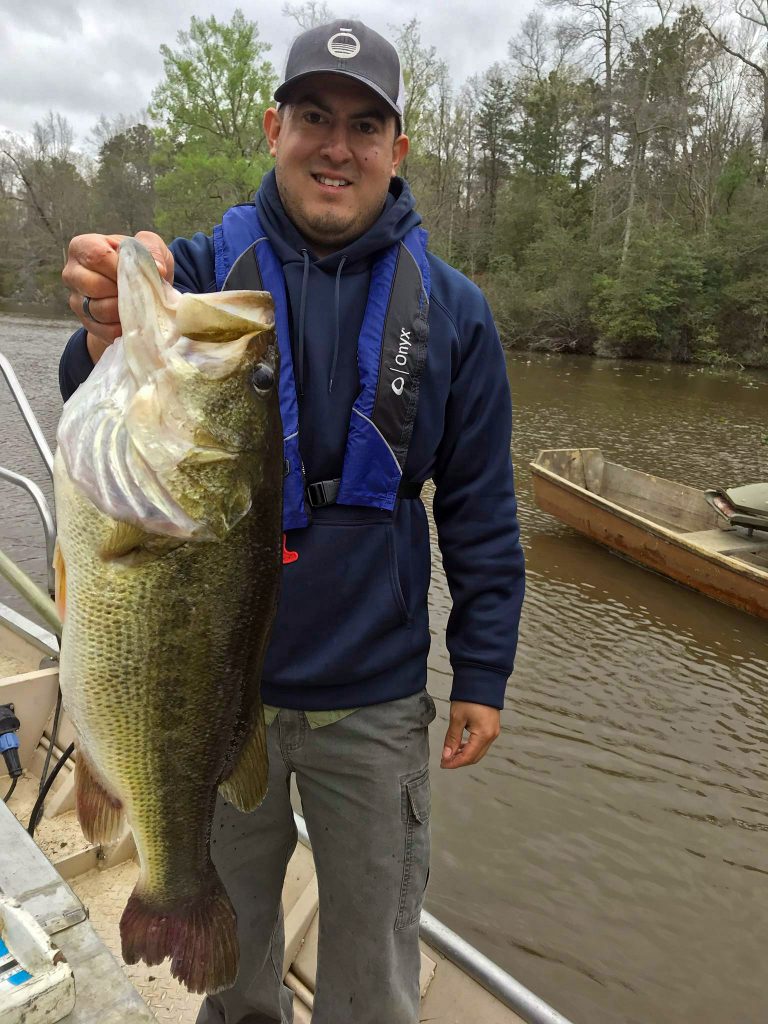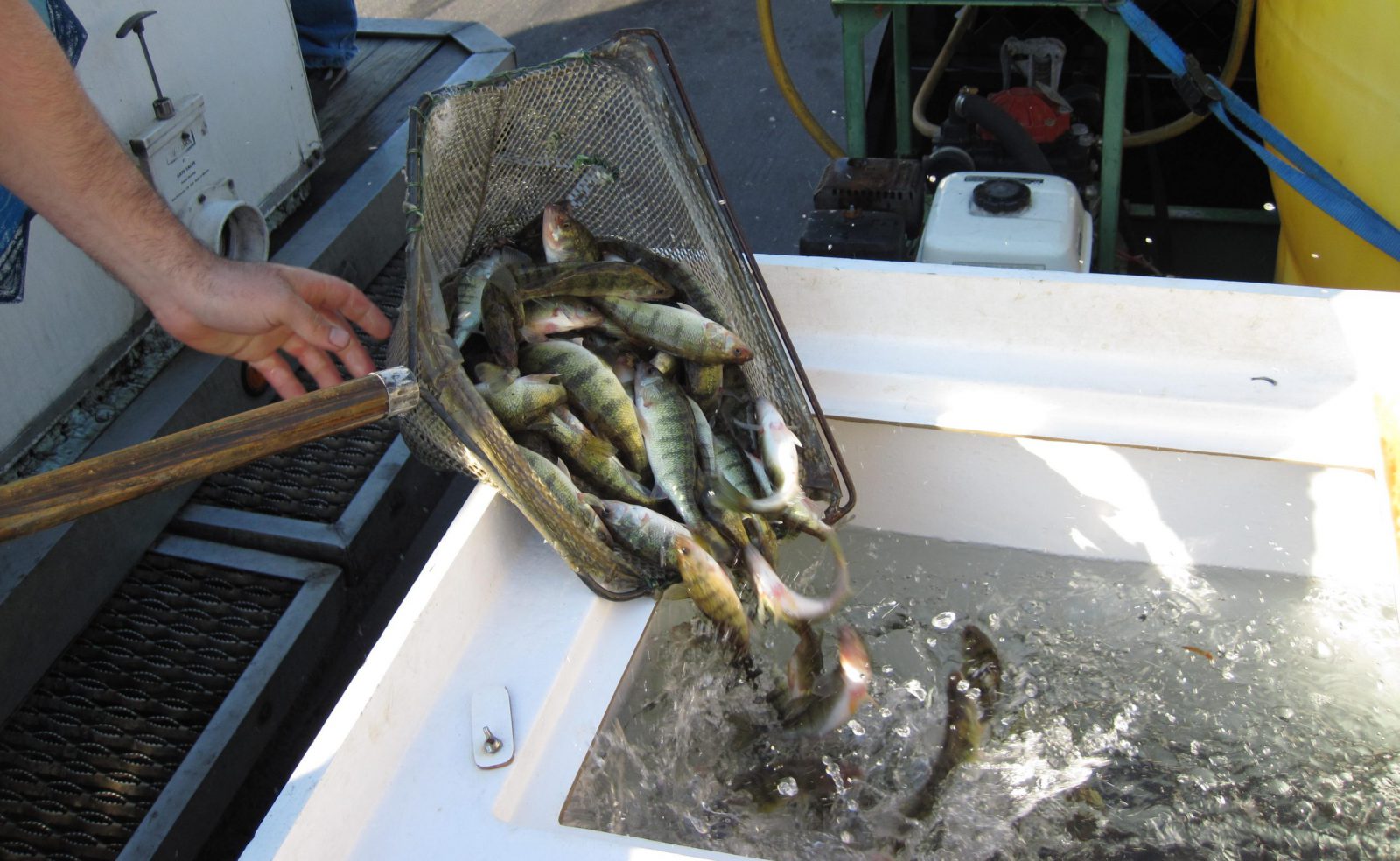
Knowing the Right Fish to Stock Your Pond With
A diverse and healthy fish population plays an essential role in maintaining an environmentally healthy, enjoyable pond in Florida. When properly stocked and maintained, a pond offers countless hours of fun, whether you enjoy fishing, boating, wildlife watching, or just enjoying the aesthetics of the waterbody. A well-managed pond also helps the ecology and environment of the surrounding area.
Whether you choose to stock your pond to keep it in balance or to improve recreational activities, choosing the right fish is critical to your success. A deep understanding of the maintenance and environmental factors that keep it healthy is also essential to stock a pond correctly.
Factors that Influence Fish Stocking
Knowing the right fish to stock your pond with and the ones to avoid will ultimately impact the enjoyment you get from a beautiful, healthy, sparkling pond. But, before you begin choosing fish species and stocking your pond, it’s important to understand some specific environmental factors that can have a positive or negative impact on your waterbody’s habitat. Factors such as pond size, maintenance habits, and the characteristics of the aquatic environment can make a difference on the success of your fish stocking efforts.
Fish Habitat and Fish Cover
When thinking about fish cover and fish habitat, keep in mind that a habitat is more than a place for fish to live; it’s a community. All fish, no matter the species, need the right type of habitat to survive. And the habitat needs of most fish can change as they grow and mature.
For instance, fry, fingerlings, and adults may thrive in different habitats. Make sure your pond has different habitat zones and enough hiding places (i.e. fish cover) for prey species to keep the pond food chain viable. The correct prey-predator ratio is crucial for a successful pond – this will help ensure that your predators don’t instantly overtake the prey species.
Check Your Current Fish Population
Before choosing fish to add to a pond, check the current fish population, even if you know the stocking history. Fish can be accidentally introduced to a pond in a number of ways. Eggs or fry can hitchhike on waterfowl. Sometimes flooding can bring in fish from nearby ponds, lakes, or waterways.
Electrofishing is a great tool that can be used to bring all the fish species to the surface for identification. This is a safe process completed by professionals using a specially-designed boat that sends an electrical charge into the water, temporarily shocking fish. After fish population data is conducted, undesirable species can be humanely removed and strategic stocking recommendations can be made.
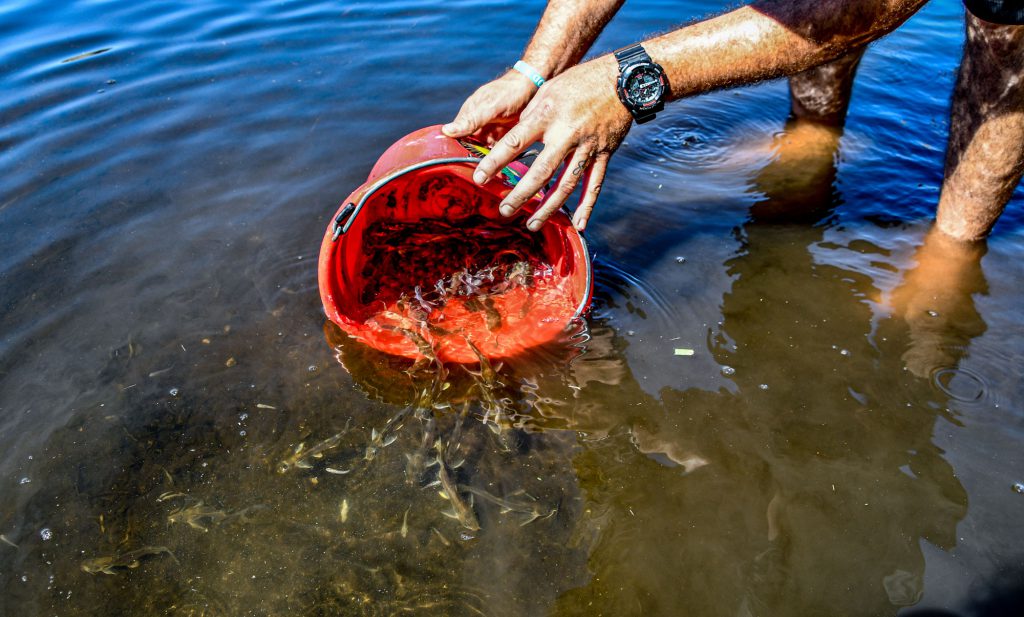
When to Stock a Pond
Fisheries Biologists in Florida recommend stocking ponds in the spring or fall months when temperatures are milder and oxygen levels are higher. This keeps the stress factors at their lowest so the fish can more quickly become acclimated to the pond and thrive.
The Different Types of Fish to Stock a Pond With in Florida
Fish can serve many purposes, but one of the most common reasons property owners choose to stock fish is for sport. Here are a few of the most common gamefish.
Largemouth Bass (Micropterus salmoides)
Florida’s most popular freshwater game fish, the Largemouth Bass, can grow up to 20 pounds. It is also the official freshwater fish of Florida. The fish is usually olive green with brown mottling, and it gets its name from its hunting method of pursuing prey with its mouth open. It will eat any prey that it can fit in its large mouth, including preyfish, insects, frogs, reptiles, and even small mammals or birds. Found throughout Florida and the southern United States, the largemouth bass is a highly valued gamefish.
Bluegill (Lepomis macrochirus)
Also called bream, brim, sunny, or copper nose, the bluegill is one of the most populous freshwater fish in Florida. A member of the sunfish family, it can grow up to 10 inches long and is easily identifiable by its dark navy gill covers. It has an oval-like shape, a blue dot slightly behind the gills, and vertical stripes beneath the dorsal fin. The males are more colorful during the spawning season. This fish is often stocked as prey for largemouth bass, and sometimes in tandem with red-ear sunfish to add diversity to a pond. It is a crucial sport fish due to its availability. It lives in shallow waters and prefers water with plenty of aquatic plants. They feed mainly on mosquitoes and smaller fish.
Channel catfish (Ictalurus punctatus)
North America’s most common catfish species, the channel catfish, can help balance a pond’s ecosystem by scavenging the pond’s bottom. It is a popular food and sport fish. When stocked alongside largemouth bass and bluegill, this species usually does well but can compete with largemouth bass for prey. Catfish are easy to identify due to the “whiskers” around their heads and long, scaleless bodies. They can reach up to 25 pounds.
What Fish Will Help "Clean Up" a Pond?
As opposed to gamefish, some fish species have management benefits, such as consuming nuisance or invasive aquatic weeds. Others help keep mosquito and midge populations under control by feasting on the larvae of these pesky insects. The right combination of pond weed-eating fish and mosquitofish will help keep the waterbody balanced and enjoyable.
Triploid Grass Carp (Ctenyopharyngodon Idella)
The herbivorous grass carp is often used to control submersed aquatic plants from overgrowing in a pond. Most people are surprised to find out that grass carp are members of the minnow family. They generally grow to about 15-20 pounds. Because they are not native to Florida, stocked grass carp are genetically altered to be sterile so they won’t crowd out native species. They are mainly used for vegetation control, especially for clearing out hydrilla. The stocking of these fish is regulated by the Florida Fish & Wildlife Conservation committee (FWC) as they are known to start eating beneficial plants if improperly stocked. The FWC issues permits for qualified waterway systems. Check with a Professional Fisheries Biologist to find out if grass carp are a good solution for your pond and to obtain a permit.
Eastern Mosquitofish (Gambusia holbrooki)
Another member of the minnow family, the mosquitofish is named after its preferred meal. It can consume its own body weight in mosquito and aquatic midge larvae each day, making it a good species to have in HOA ponds or community lakes. And since they give birth to live young at all times of the year, they are plentiful prey fish for largemouth bass and bluegill.
What Not to Stock in Your Pond
Just as important as knowing what to stock is knowing what not to stock in your pond. Creating the right prey-predator ratio is also key to maintaining the pond’s health.
It is illegal to stock exotic species, or species from hatcheries outside of Florida without the permission of the FWC. Aquarium fish such as koi, goldfish, pacus, Oscars, tropical fish of all species, and non-native fish should not be stocked in ponds. Not only are they likely to upset the balance of the pond, but there is also the possibility that they may make their way into rivers and lakes where they can decimate the native fish population across large areas.
Cultivating Your Fishery
Fisheries management does not end with stocking. Creating a healthy, productive habitat is important to supporting the longevity of stocked populations.
Strategically introduced vegetation can provide habitat and cover for prey fish seeking refuge from predators, creating a more dynamic hunting ground. Any type of cultivated vegetation should be carefully managed. If the pond has too many plants, they can reduce the amount of dissolved oxygen that the fish need to breathe, leading to fish kills.
Depending on your fisheries goals, a Fisheries Biologist may also recommend introducing an automatic fish feeder for supplemental feeding, applying products to increase nutrient levels, or using advanced solutions to create more ideal water quality conditions.
No matter where you are in your fisheries journey, it’s important to work with a professional to help you navigate the complexities of species selection, stocking methods, habitat development, permitting, and long-term cultivation.
How Does Electrofishing Work?
Contact Us for Your Fish Stocking Needs
Call us at 888-480-5253 or complete the form below to connect with an aquatic management expert.
SOLitude Lake Management is a nationwide environmental firm committed to providing sustainable solutions that improve water quality, enhance beauty and preserve natural resources.
SOLitude’s team of aquatic scientists specializes in the development and execution of customized lake, stormwater pond, wetland and fisheries management programs. Services include water quality testing and restoration, algae and aquatic weed control, installation and maintenance of fountains and aeration systems, shoreline erosion control, muck and sediment removal and invasive species management. SOLitude partners with homeowners associations, golf courses, private landowners, businesses and municipalities. SOLitude Lake Management is part of Rentokil, a leading business services company, operating across the United States, Canada and Puerto Rico.
For more information, visit SOLitude Lake Management at solitudelakemanagement.com, and connect on Facebook, LinkedIn and Twitter.








